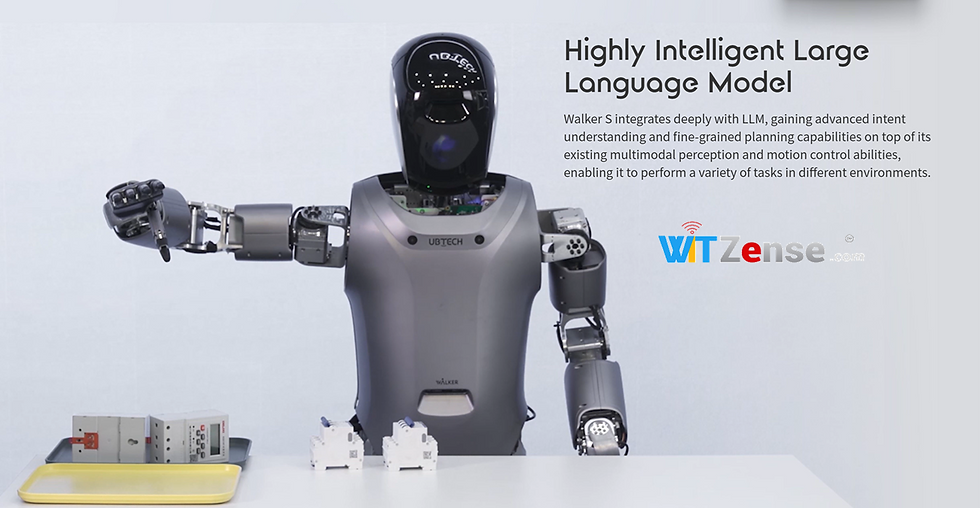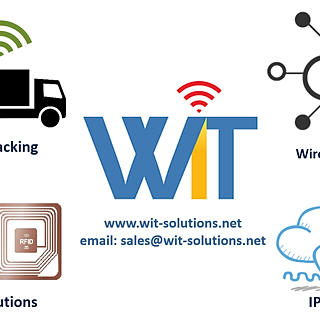What Is BRIEF? How This Lightweight Descriptor Helps Robots Work Smarter in the Real World
- wit-tech
- Jul 27
- 4 min read

What Is BRIEF? How This Lightweight Descriptor Helps Robots Work Smarter in the Real World
In the fast-moving world of autonomous robots—whether in warehouses, delivery systems, or on factory floors—speed and efficiency are everything. These machines need to make real-time decisions using visual input. That’s where BRIEF descriptors come in.
BRIEF (Binary Robust Independent Elementary Features) is a lightweight and fast feature descriptor that helps robots understand their surroundings visually. While it may not be as famous as SIFT or SURF, BRIEF has become essential for many commercial robotics tasks where speed, power efficiency, and simplicity matter.
Let’s dive into what BRIEF is, how it works, and why it's a critical enabler for real-world robotic applications.
🔍 What Is a Descriptor, Anyway?
In computer vision, a descriptor is a numerical fingerprint of a keypoint or feature in an image.
Imagine a robot sees a corner of a box or the edge of a shelf. To “remember” and later recognize that feature, the system must describe it using numbers. This description should be:
Unique: so it can be matched reliably.
Compact: for low memory use.
Fast to compute: to keep up with real-time motion.
🧠 What Is BRIEF?
BRIEF stands for Binary Robust Independent Elementary Features, introduced in 2010 by Calonder et al.

Key Idea:
BRIEF encodes the appearance of a keypoint by performing simple binary comparisons of pixel intensities within a small image patch.
How It Works (Simplified):
Take a patch (e.g., 31×31 pixels) around a detected keypoint.
Define a set of pre-determined point pairs within the patch.
For each pair, compare pixel values:
If I(p1)<I(p2)I(p_1) < I(p_2)I(p1)<I(p2), store a 1.
Else, store a 0.
Repeat for many pairs (e.g., 256 comparisons) → result: a 256-bit binary string.
This binary string becomes the descriptor for that keypoint.
Why It’s Powerful:
Super fast to compute.
Tiny memory footprint.
Descriptors can be compared using Hamming distance, which is extremely fast on modern hardware.
🏭 Why BRIEF Is Perfect for Commercial Robots
In commercial environments—think warehouses, fulfillment centers, delivery robots—robots need vision systems that are:
Fast: Real-time decision-making is critical.
Energy-efficient: Many robots run on batteries.
Robust: Environments change constantly (e.g., lighting, layout).

Here’s how BRIEF helps in these settings:
1. Real-Time Navigation (Visual SLAM)
Robots use vSLAM (Visual Simultaneous Localization and Mapping) to map the environment and locate themselves. BRIEF descriptors:
Allow rapid feature matching between frames.
Enable map updates and pose estimation at high frame rates.
This is vital for:
Warehouse robots navigating long aisles.
Inventory drones flying indoors.
Delivery bots moving through office spaces or malls.
2. Low-Cost, Low-Power Devices
Not every robot has the luxury of a GPU. BRIEF works extremely well on:
Embedded processors (ARM chips).
Microcontrollers with limited memory and compute.
This makes it ideal for:
Smart vacuum cleaners.
Shelf-scanning robots in retail.
Lightweight drones.
3. Object Recognition in Dynamic Environments
Using BRIEF with a fast keypoint detector (like FAST or ORB), robots can:
Recognize docking stations.
Identify item bins.
Track moving packages on a conveyor.
And they can do it quickly and consistently, even as the lighting or camera angle changes.
4. Scalable Swarm Robotics
In scenarios with fleets of robots (e.g., Amazon fulfillment), thousands of small robots operate together. BRIEF allows each one to:
Process visual data quickly and independently.
Avoid collisions.
Navigate shared spaces without latency.
🧠 BRIEF + ORB: A Popular Pairing
While BRIEF is fast, it’s not rotation-invariant on its own. That’s why it’s often paired with detectors that provide orientation information—like in the ORB (Oriented FAST and Rotated BRIEF) algorithm.
ORB combines:
FAST keypoint detector
BRIEF descriptors, modified for rotation and scale robustness
This makes ORB+BRIEF a go-to combo in open-source SLAM systems like ORB-SLAM, which powers many real-world robots.
⚖️ Tradeoffs of BRIEF
While BRIEF is great for commercial use, it does come with trade-offs:
Strengths | Weaknesses |
Ultra-fast | Not scale-invariant |
Low memory usage | Less distinctive in complex scenes |
Easy to implement | Sensitive to rotation (without ORB) |
For high-precision tasks (e.g., medical robotics), more robust descriptors like SIFT might be used. But in most commercial scenarios, speed beats perfection.
🚀 The Takeaway
BRIEF descriptors are small but mighty. In the world of commercial autonomous robots, where efficiency is king, BRIEF provides a powerful way to describe and recognize features in the visual world.
They help robots:
See and understand their environment.
Navigate quickly and safely.
Perform tasks reliably on affordable hardware.
As robots continue to enter industries like retail, logistics, and hospitality, fast visual tools like BRIEF will be a cornerstone of their visual intelligence.







Comments